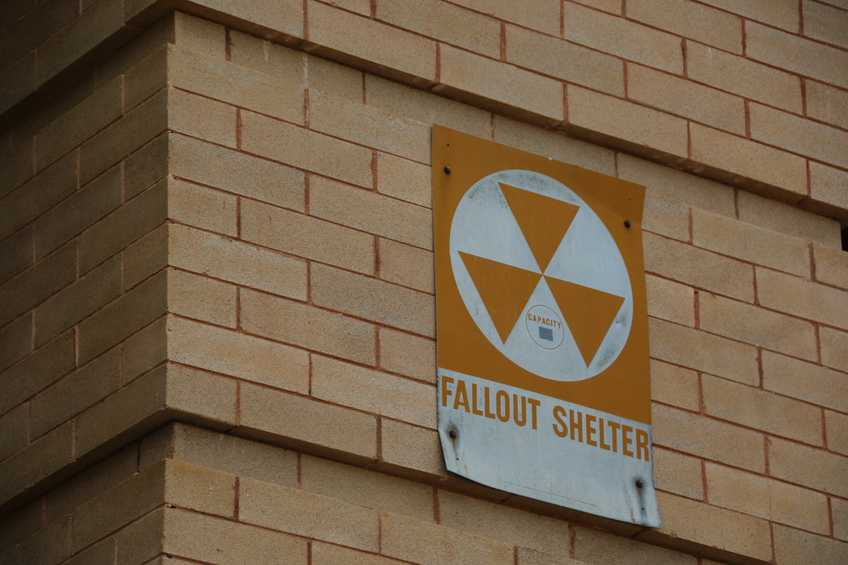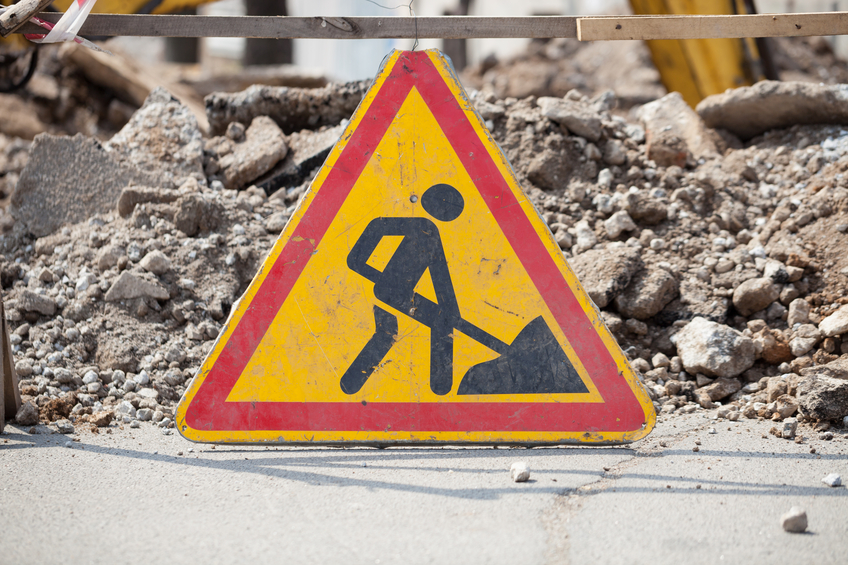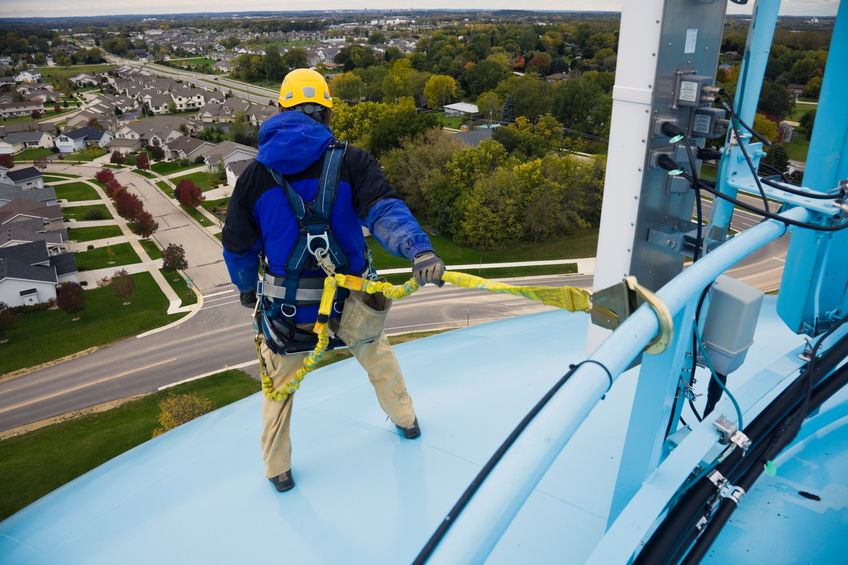Arkansas Construction Safety 30 PDH Discount Package 3
Protecting Building Environments from Airborne CBR Attacks (F03-003)
Protecting Construction Workers in Confined Spaces (Y03-002)
Construction Safety (C01-009)
A Guide to the Big Four Safety Hazards in Industry (C01-016)
Fall Protection in Construction (C03-057)
Introduction to Radiation (Y03-004)
Ergonomic Guidelines for Manual Material Handling (Y03-003)
Respirable Crystalline Silica Standard for Construction (C09-005)

This online engineering PDH course provides guidance on the various explosive blast mitigation measures as well as chemical, biological and radiological (CBR) protective measures. It discusses explosion effects, building damage, injuries, levels of protection, stand-off distance, and predicting blast loads and effects. It also presents protective measures and actions to safeguard the occupants of a building from CBR threats based on guidance from the CDC/NIOSH and the DOD. These measures include evacuation, sheltering in place, personal protective equipment, air filtration and pressurization, and exhausting and purging, as well as CBR detection.
This 4 PDH online course is applicable to engineers, planners, architects, landscape designers, construction and operations personnel, security and law enforcement agents, as well as consultants and contractors to gain a better understanding in identifying and implementing explosive blast and CBR protective measures against potential terrorist attacks.
This PE continuing education course is intended to provide you with the following specific knowledge and skills:
- Understanding the blast process and effects (chemical reaction, blast shockwave, incident and reflected pressures, building damage and injuries)
- Estimating the minimum standoff distance based on a given design threat
- Predicting blast loads and effects
- Implementing various design protective measures for CBR mitigation
In this professional engineering CEU course, you need to review Chapter 4 “Explosive Blast” and Chapter 5 “Chemical, Biological, and Radiological Measures” of the FEMA Publication tilted, “Mitigating Potential Terrorist Attacks Against Buildings” (FEMA 426).
Upon successful completion of the quiz, print your Certificate of Completion instantly. (Note: if you are paying by check or money order, you will be able to print it after we receive your payment.) For your convenience, we will also email it to you. Please note that you can log in to your account at any time to access and print your Certificate of Completion.

This online engineering PDH course provides guidance on such protective measures that a building owner, manager or engineer can implement without undue delay to enhance occupant protection from an airborne chemical, biological, or radiological (CBR) attack.
The likelihood of a specific building being targeted for terrorist activity is generally difficult to predict. As such, there is no specific formula that will determine a certain building's level of risk. Building owners, managers or engineers must make their own decisions about how to reduce their building's risk to airborne chemical, biological, or radiological (CBR) attack.
These decisions may be aided by a comprehensive building security assessment to identify the appropriate protective measures which will help transform buildings into less attractive targets. These protective measures include, but are not limited to, increasing the difficulty of introducing a CBR agent, increasing the ability to detect terrorists before they carry out an intended release, and incorporating plans and procedures to mitigate the effects of a CBR release.
This 3 PDH online course is applicable to building owners, facility engineers and managers, and maintenance personnel of public, private, and governmental buildings, including offices, laboratories, hospitals, retail facilities, schools, transportation terminals, and public venues (for example, sports arenas, malls, coliseums), who are interested in gaining a better understanding of enhancing the resilience of a building.
This PE continuing education course is intended to provide you with the following specific knowledge and skills:
- Understanding buildings and their systems
- Identifying physical security requirements
- Evaluating HVAC systems and their vulnerability to CBR agents
- Implementing maintenance, administration and training measures
In this professional engineering CEU course, you need to review the course document titled "Protecting Building Environments from Airborne Chemical, Biological or Radiological Attacks" prepared by the National Institute for Occupational Safety and Health (NIOSH), Department of Health and Human Services, May 2002.
Upon successful completion of the quiz, print your Certificate of Completion instantly. (Note: if you are paying by check or money order, you will be able to print it after we receive your payment.) For your convenience, we will also email it to you. Please note that you can log in to your account at any time to access and print your Certificate of Completion.

This online engineering PDH course provides guidance on the Confined Spaces standard that applies to construction work performed in confined spaces. It addresses the most common issues that employers face and provides sufficient detail to serve as a useful compliance guide.
A confined space is a space whose configuration and/or contents may present special dangers not found in normal work areas. Confined spaces may be poorly ventilated and, as a result, contain insufficient oxygen or hazardous levels of toxic gases. Working in a tight space can prevent a worker from keeping a safe distance from mechanical and electrical hazards in the space. Fumes from flammable liquids in a poorly ventilated area can reach explosive levels.
Such hazards endanger both the workers in the confined space and others who become exposed to the hazards when they attempt to rescue injured workers. Therefore, employers must evaluate all confined spaces in which their employees work to determine whether hazards exist and whether the work to be done has the potential to create such hazards in the future.
This 3 PDH online course is applicable to engineers, architects, managers and contractors whose duties involve work in confined spaces and are interested in learning about the proper approach to safety while working in compliance with the Confined Spaces standard.
This PE continuing education course is intended to provide you with the following specific knowledge and skills:
- Familiarizing with confined and permit spaces
- Gaining a general overview of the Confined Spaces standard’s requirements
- Learning about employer responsibilities and worker training
- Understanding the content of the permit space program
- Learning about the alternate procedures for certain permit spaces
- Understanding the responsibilities of entrants, attendants and entry supervisors
- Exploring different rescue and emergency services
Upon successful completion of the quiz, print your Certificate of Completion instantly. (Note: if you are paying by check or money order, you will be able to print it after we receive your payment.) For your convenience, we will also email it to you. Please note that you can log in to your account at any time to access and print your Certificate of Completion.

This online engineering PDH course presents the OSHA guidelines for worker safety in construction for protecting workers against potential accident exposure.
Nearly 6.5 million people work at approximately 252,000 construction sites across the nation on any given day. The fatal injury rate for the construction industry is higher than the national average in this category for all industries. Potential hazards for workers in construction include:
- Falls (from heights)
- Trench collapse
- Scaffold collapse
- Electric shock and arc flash/arc blast
- Failure to use proper personal protective equipment
- Repetitive motion injuries
OSHA recognizes that construction work presents serious hazards to all workers involved. Therefore OSHA developed the OSHA Worker Safety Series in Construction to protect workers against potential accident exposure.
This 1 PDH online course is applicable to employers/business owners, engineers, managers, construction workers and all other personnel working in the construction industry.
This PE continuing education course is intended to provide you with the following specific knowledge and skills:
- Understanding the hazards and solutions for scaffolding
- Understanding the hazards and solutions for fall protection
- Understanding the hazards and solutions for ladders
- Understanding the hazards and solutions for stairways
- Understanding the hazards and solutions for trenching
- Understanding the hazards and solutions for cranes
- Understanding the hazards and solutions for hazard communication
- Understanding the hazards and solutions for forklifts
- Understanding the hazards and solutions for head protection
In this professional engineering CEU course, you need to review the OSHA Publication 3252-05N 2005, "Worker Safety Series – Construction”.
Upon successful completion of the quiz, print your Certificate of Completion instantly. (Note: if you are paying by check or money order, you will be able to print it after we receive your payment.) For your convenience, we will also email it to you. Please note that you can log in to your account at any time to access and print your Certificate of Completion.

This online engineering PDH course provides an introduction to the proper approach to assessing the workplace environment for hazards and their remedies. It presents the most important recommendations and how to apply them to the situation at hand. Through the completion of this course, an employer or manager can determine what actions are necessary to reduce the risk of employee exposure to these hazards.
There are four main hazards associated with industrial work: fall, electrical, struck-by, and caught-in. These hazards are known to cause injuries and fatalities in the workplace. It is important to train managers and employees on how to identify, avoid, and remedy these risks in the workplace. When employees are trained for these hazards, the potential for injuries, fatalities and the liability to the employer are all decreased.
This 1 PDH online course is applicable to engineers, designers, contractors, construction workers and other professionals interested in understanding the four main hazards that may appear in the workplace and how to better prepare to identify and correct those hazards.
This PE continuing education course is intended to provide you with the following specific knowledge and skills:
-
Understanding the sources of work related hazards
-
Knowing how to identify and avoid hazards
-
Implementing a safe and successful work environment
Upon successful completion of the quiz, print your Certificate of Completion instantly. (Note: if you are paying by check or money order, you will be able to print it after we receive your payment.) For your convenience, we will also email it to you. Please note that you can log in to your account at any time to access and print your Certificate of Completion.

This online engineering PDH course presents the OSHA guidelines for fall protection for protecting workers against potential fall hazards.
Historically, falls are the leading cause of fatalities in construction, accounting for about one-third of all fatalities in the industry. Workers involved in working at heights are exposed to potential fall hazards. Accidents involving falls are generally complex events frequently involving a variety of factors
OSHA recognizes that working at heights presents serious hazards to all workers involved. Consequently, the standard for fall protection deals with both the human and equipment-related issues in protecting workers from fall hazards.
This 3 PDH online course is intended for employers/business owners, engineers, managers and construction workers interested in better understanding the Fall Protection in Construction requirements and the reasons behind them.
This PE continuing education course is intended to provide you with the following specific knowledge and skills:
- Identifying potential fall hazards
- Selecting fall protection systems appropriate for existing conditions
- Implementing proper construction and installation of safety systems
- Training and supervising employees in the proper selection, use and maintenance of fall protection systems
In this professional engineering CEU course, you need to review the OSHA Standard, "Fall Protection in Construction", (OSHA 3146), published in 2015.
Once you complete your course review, you need to take a multiple-choice quiz consisting of twenty (20) questions to earn 3 PDH credits. The quiz will be based on this OSHA publication.
Upon successful completion of the quiz, print your Certificate of Completion instantly. (Note: if you are paying by check or money order, you will be able to print it after we receive your payment.) For your convenience, we will also email it to you. Please note that you can log in to your account at any time to access and print your Certificate of Completion.

This online engineering PDH course provides an overview of the types of radiation, the health effects due to exposure and the way it is regulated.
Radiation has always been present and is all around us. Life has evolved in a world containing significant levels of ionizing radiation. We are also exposed to man-made radiation from sources such as medical treatments and activities involving radioactive material.
The health effects of radiation are well understood. Since the early 20th century, radiation’s effects have been studied in depth, in both the laboratory and among human populations. Because of the known health risks of radiation, it must be carefully used and strictly controlled. A balance must be struck between radiation’s societal benefits and the risks that radiation poses to people, health and the environment.
The Canadian Nuclear Safety Commission (CNSC) regulates the use of nuclear energy and materials to protect the health, safety and security of Canadians and the environment; and to implement Canada's international commitments on the peaceful use of nuclear energy. It also sets dose limits to prevent workers and the public from excessive radiation exposure.
This 3 PDH online course is applicable to safety engineers and professionals who are interested in learning more about nuclear safety.
This PE continuing education course is intended to provide you with the following specific knowledge and skills:
- Understanding the definitions of atoms, isotopes and radioisotopes
- Familiarizing with the types of radiation: non-ionizing and ionizing radiation
- Knowing the natural and man-made sources of ionizing radiation
- Understanding the health effects of radiation exposure and how it causes cancer
- Familiarizing with the epidemiological evidence of the effect of the radiation exposure
- Identifying the radiation dose limits and the typical radiation doses produced by natural and man-made sources
- Learning the types of radiation doses: absorbed, equivalent and effective dose
- Familiarizing with the rules regulating radiation
Upon successful completion of the quiz, print your Certificate of Completion instantly. (Note: if you are paying by check or money order, you will be able to print it after we receive your payment.) For your convenience, we will also email it to you. Please note that you can log in to your account at any time to access and print your Certificate of Completion.

This online engineering PDH course provides information on effective ergonomic interventions that help lower the physical demands of manual material handling (MMH) work.
Manual material handling work contributes to a large percentage of over half a million cases of musculoskeletal disorders reported annually in the United States. Musculoskeletal disorders often involve strains and sprains to the lower back, shoulders, and upper limbs. They can result in protracted pain, disability, medical treatment, and financial stress for those afflicted with them.
Effective ergonomic interventions can lower the physical demands of MMH work tasks, thereby lowering the incidence and severity of the musculoskeletal injuries they can cause. Their potential for reducing injury-related costs alone make ergonomic interventions a useful tool for improving a company’s productivity, product quality, and overall business competitiveness.
This 3 PDH online course is applicable to engineers, managers and supervisors who are interested in learning more about ergonomic interventions that reduce the physical demands of manual material handling work.
This PE continuing education course is intended to provide you with the following specific knowledge and skills:
- Familiarizing with the basics of manual material handling
- Understanding the importance of improving the workplace
- Understanding the conditions associated with the development of injuries in manual material handling tasks
- Learning about the different types of ergonomic improvements
- Knowing easier ways to manually lift, lower, fill, or empty containers
- Exploring alternatives to the manual handling of individual containers
Upon successful completion of the quiz, print your Certificate of Completion instantly. (Note: if you are paying by check or money order, you will be able to print it after we receive your payment.) For your convenience, we will also email it to you. Please note that you can log in to your account at any time to access and print your Certificate of Completion.

This online engineering PDH course provides an overview of the Occupational Safety and Health Administration’s (OSHA) Respirable Crystalline Silica Standard for Construction.
Crystalline silica is a common mineral found in many naturally occurring and man-made materials used at construction sites. Materials like sand, concrete, brick, block, stone and mortar contain crystalline silica. Amorphous silica, such as silica gel, is not crystalline silica. Respirable crystalline silica – very small particles typically at least 100 times smaller than ordinary sand found on beaches or playgrounds – is generated by high-energy operations like cutting, sawing, grinding, drilling and crushing stone, rock, concrete, brick, block and mortar, or when abrasive blasting with sand.
Construction workers exposed to respirable crystalline silica are at increased risk of developing serious adverse health effects including silicosis, lung cancer, chronic obstructive pulmonary disease, and kidney disease. This course describes the steps that employers are required to take to protect employees in construction from the hazards associated with exposure to respirable crystalline silica. This course provides guidance only, and does not alter or determine compliance responsibilities, which are laid out in OSHA standards and the Occupational Safety and Health Act.
This 9 PDH online course is intended for safety and health engineers, construction workers and others looking to better understand OSHA’s Respirable Crystalline Silica standard for construction.
This PE continuing education course is intended to provide you with the following specific knowledge and skills:
- Gaining general information about respirable crystalline silica
- Familiarizing with the scope and definition of the standard
- Learning about the specified exposure control methods and the alternative exposure control methods
- Understanding several sections of the standard such as: respiratory protection, housekeeping, written exposure control plan, medical surveillance, communication of hazards, and recordkeeping
Upon successful completion of the quiz, print your Certificate of Completion instantly. (Note: if you are paying by check or money order, you will be able to print it after we receive your payment.) For your convenience, we will also email it to you. Please note that you can log in to your account at any time to access and print your Certificate of Completion.